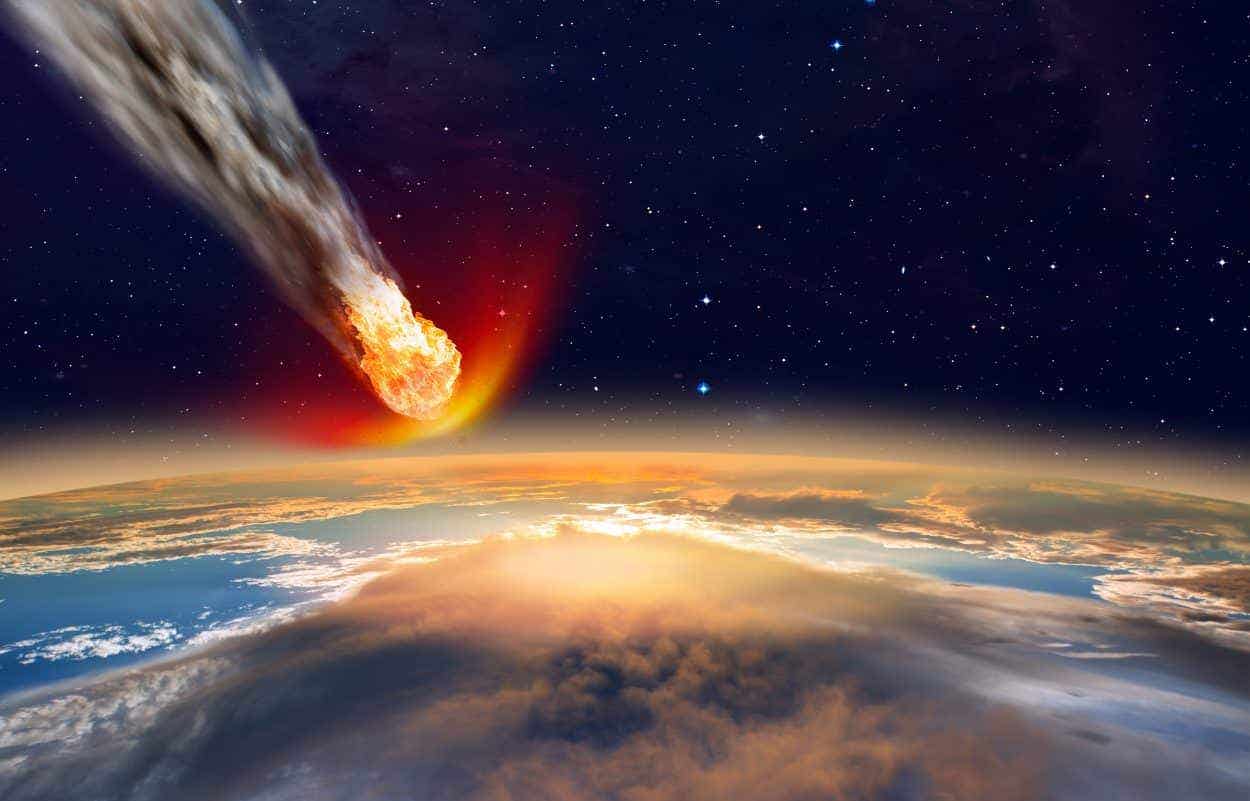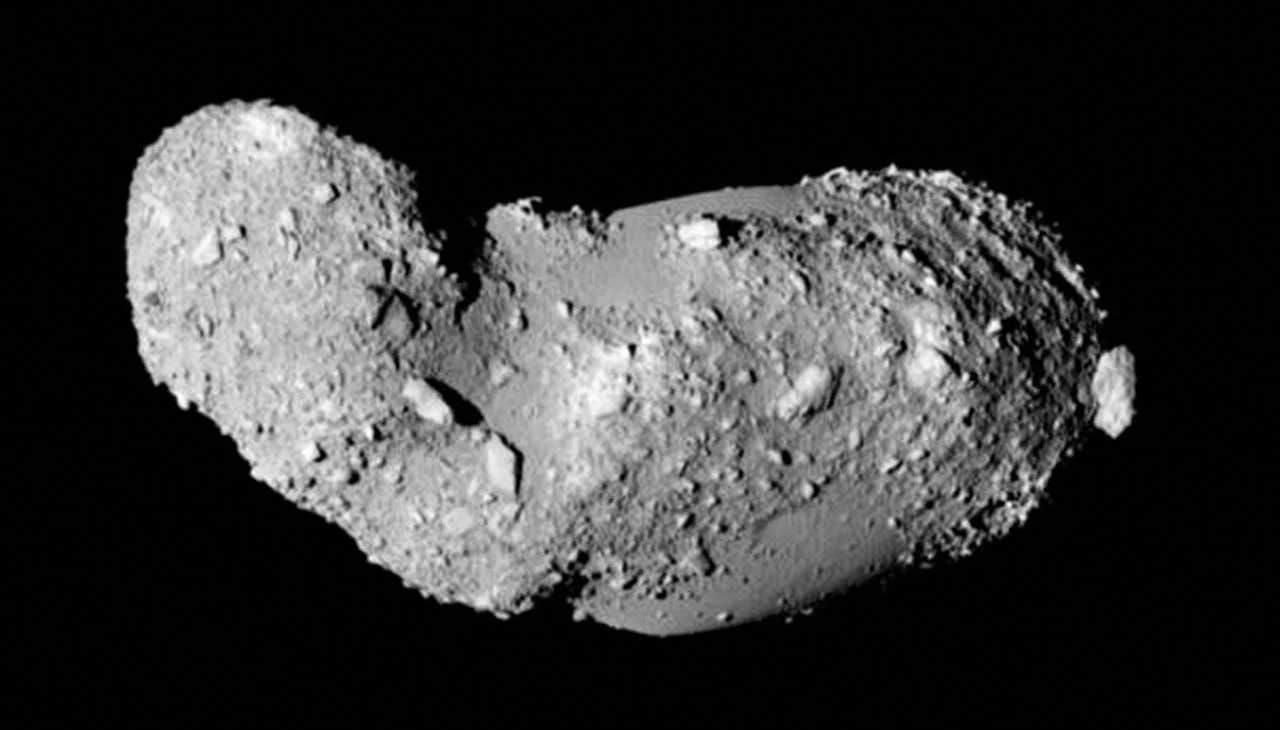Asteroid impact could trigger climate chaos, but oceans might thrive
Near-Earth asteroids have long been a concern for scientists studying planetary threats. As of September 2024, more than 35,800 have been identified.

A medium-sized asteroid strike could cause global cooling, reduced rainfall, and food shortages, but ocean ecosystems might unexpectedly flourish. (CREDIT: Shutterstock)
Near-Earth asteroids have long been a concern for scientists studying planetary threats. As of September 2024, more than 35,800 such objects have been identified. Among them, nearly 5,000 range from 300 meters to 1 kilometer in diameter.
While the odds of a major impact remain low, these asteroids still pose a significant hazard. One of the most concerning is a 500-meter-wide asteroid with a predicted 1-in-2700 chance of colliding with Earth in September 2182.
A medium-sized asteroid strike could trigger widespread devastation, including earthquakes, tsunamis, and wildfires. The aftermath would extend beyond immediate destruction, with lingering climate disruptions caused by aerosols and gases injected into the atmosphere.
A well-known historical example is the Chicxulub impact, which contributed to the mass extinction event that wiped out the dinosaurs. The debris from that event blocked sunlight, cooled the planet, and disrupted global ecosystems.
Smaller asteroid impacts, though less catastrophic, could still lead to significant changes. Recent research published in the journal Science Advances suggests that a collision with a 500-meter object could unleash hundreds of millions of tons of dust into the upper atmosphere. This would create a temporary "impact winter," reducing global temperatures, altering rainfall patterns, and damaging the ozone layer.
Simulating an Asteroid Impact
To understand how Earth’s climate and ecosystems might respond to such an event, researchers at the IBS Center for Climate Physics at Pusan National University in South Korea conducted an advanced climate simulation.
Their model, run on the IBS supercomputer Aleph, analyzed the effects of a medium-sized asteroid collision on land and ocean environments. Unlike previous studies, this research incorporated interactions between atmospheric chemistry, terrestrial ecosystems, and marine life.
The simulations explored different impact scenarios, varying the amount of dust injected into the atmosphere from 100 to 400 million tons.
Results showed that solar dimming from the dust would cause global temperatures to drop by up to 4°C. Rainfall levels would decline by about 15%, and the ozone layer could be depleted by roughly 32%. While these figures represent global averages, regional effects could be even more severe.
"The abrupt impact winter would provide unfavorable climate conditions for plants to grow, leading to an initial 20–30% reduction of photosynthesis in terrestrial and marine ecosystems," said Dr. Lan Dai, lead author of the study. This disruption could threaten food security worldwide, as plant growth would be suppressed for several years after the impact.
The Ocean’s Surprising Response
While land-based plant life would struggle to recover, ocean ecosystems might experience a different outcome. The research team found that plankton growth patterns diverged sharply from those of terrestrial plants. Rather than suffering long-term decline, ocean plankton recovered within six months and then flourished.
The key factor behind this unexpected response was iron concentration in the dust. Iron is a vital nutrient for algae, but its natural availability is limited in certain ocean regions, such as the Southern Ocean and the eastern tropical Pacific. If an asteroid impact released iron-rich dust, these nutrient-poor waters could suddenly become fertile breeding grounds for phytoplankton.
Related Stories
"We were able to track this unexpected response to the iron concentration in the dust," explained Professor Axel Timmermann, co-author of the study. The research suggested that diatoms, a type of silicate-rich algae, would experience massive population booms. These blooms, in turn, would support higher numbers of zooplankton—small marine animals that feed on algae.
The sudden abundance of marine life could help counteract food shortages on land. "The simulated excessive phytoplankton and zooplankton blooms might be a blessing for the biosphere and may help alleviate emerging food insecurity related to the longer-lasting reduction in terrestrial productivity," added Dr. Dai.
The Role of Asteroid Impacts in Earth’s History
Asteroid collisions of this scale happen roughly every 100,000 to 200,000 years. This means that early human ancestors may have witnessed and endured similar planetary upheavals. These events could have influenced migration patterns, food sources, and even evolutionary changes.
“On average, medium-sized asteroids collide with Earth about every 100–200 thousand years. This means that our early human ancestors may have experienced some of these planet-shifting events before with potential impacts on human evolution and even our own genetic makeup,” said Prof. Timmermann.
Understanding the effects of asteroid strikes is critical for assessing future threats. The new study offers valuable insights into how Earth’s climate, ecosystems, and even human civilization might respond to such an event.
In the next phase of their research, the team plans to explore how prehistoric human populations may have adapted to past asteroid impacts. They intend to use advanced simulations to model early human behaviors, migration, and survival strategies under extreme environmental conditions.
This research underscores the importance of planetary defense initiatives. Tracking near-Earth asteroids and developing potential mitigation strategies could be vital in reducing future risks.
While the likelihood of a major impact remains small, understanding the possible consequences ensures better preparation for any eventuality.
Note: Materials provided above by The Brighter Side of News. Content may be edited for style and length.
Like these kind of feel good stories? Get The Brighter Side of News' newsletter.
Joseph Shavit
Head Science News Writer | Communicating Innovation & Discovery
Based in Los Angeles, Joseph Shavit is an accomplished science journalist, head science news writer and co-founder at The Brighter Side of News, where he translates cutting-edge discoveries into compelling stories for a broad audience. With a strong background spanning science, business, product management, media leadership, and entrepreneurship, Joseph brings a unique perspective to science communication. His expertise allows him to uncover the intersection of technological advancements and market potential, shedding light on how groundbreaking research evolves into transformative products and industries.



